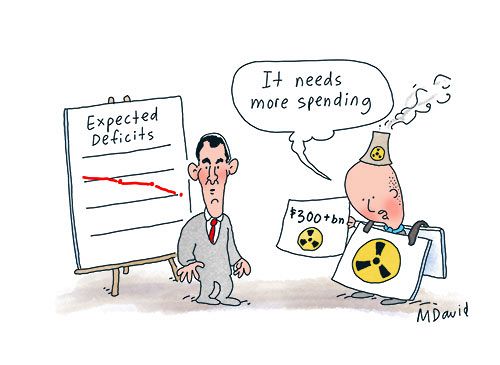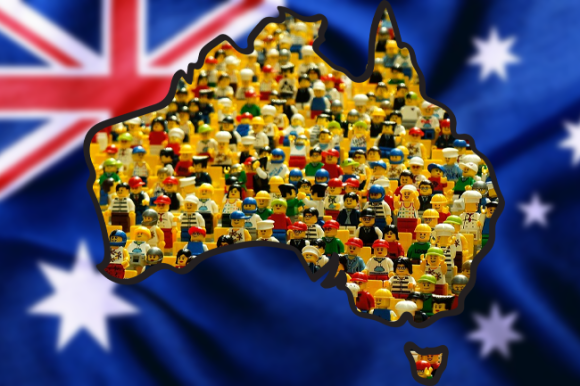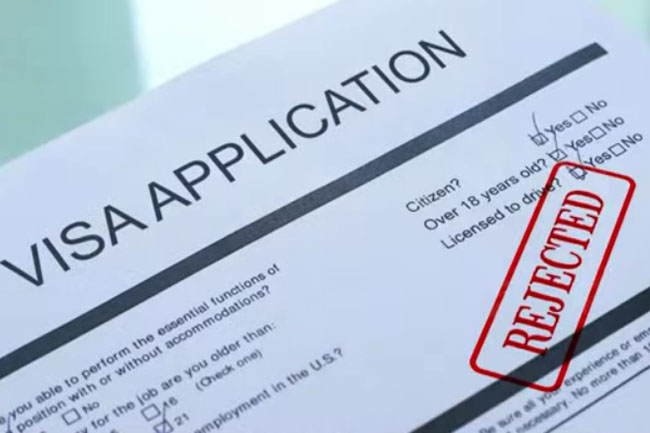A few weeks out from the Federal Election, both major parties are focused on immigration but voters remain in the dark on details, writes Dr Abul Rizvi.
IN HIS PAST TWO budget reply speeches, Opposition Leader Peter Dutton has highlighted his desire to reduce immigration. He is determined to make immigration an issue for the forthcoming election while providing few details on what he would actually do and what legal powers he would need to acquire.
Both major parties are guilty of not providing key details on their respective immigration plans. That makes it hard for Australians to decide who to believe.
There are three main allegations the major parties will throw at Australian voters:
- Both major parties will say they don’t believe in a "Big Australia" and that the other party does;
- both major parties will blame each other for the blowout in net migration after COVID; and
- both major parties will say they are reducing immigration levels without explaining how they will deliver their respective targets/forecasts.
Which party believes in a Big Australia?
Because of the closure of international borders associated with COVID, (which started in early 2020), we have to go back to the 2019 Budget to get a handle on the Coalition Government’s forecast for population growth.
The 2019 Budget assumed:
- a fertility rate of 1.9 births per woman; and
- long-term net migration at around 270,000 per annum.
That compares with the following assumptions in the 2025 Budget:
- the fertility rate at 1.5 births per woman; and
- long-term net migration at around 225,000 per annum.
The 2019 "Back in Black" Budget relied heavily on high levels of long-term population growth to drive strong economic growth. It forecast Australia’s population to reach 27 million around early 2023. Our population did not reach that number until a year later in early 2024.
When the 2019 Budget was released, Peter Dutton was responsible for immigration policy and MP Michael Sukkar was responsible for housing policy. Did they express concern about the rapid population growth forecast in that budget for housing Australians? There is no publicly available information on any concerns they may have had.
Australia’s population size and long-term average growth rate would be significantly higher under the 2019 Budget assumptions compared to the 2025 Budget assumptions, even after taking into account the surge in net migration from 2022 to 2024.
The day after his 2024 budget reply speech, Peter Dutton claimed he would reduce net migration to 160,000 per annum. He gave very few details on how he would do that. Six months later, he walked that back. It is likely Dutton learned how difficult it would be to deliver net migration at 160,000 per annum without a very weak labour market. He now says he will provide a new net migration target "in due course".
That means we cannot know which party will deliver faster or slower population growth — but they will both claim not to believe in a Big Australia.
Why did net migration blow out after COVID?
Net migration fell sharply when international borders were closed. In anticipation of international borders re-opening, the Coalition Government made a range of policy changes, particularly in relation to students (for example, unlimited work rights; fee-free applications; special COVID visa) and working holidaymakers (such as the option of a third working holidaymaker visa; increase in age limits) that turbocharged net migration.
Against the background of major labour shortages in 2022, the Labor Government delayed tightening policy and in fact, made changes that accelerated the increase in net migration. In the second half of 2022, with businesses complaining about labour shortages, Peter Dutton expressed scepticism about whether the Government could increase migration fast enough.
He said:
“We do need an increase in the migration numbers, but we’ll see what the Government actually delivers because this can be many, many months, if not a couple of years, in the pipeline."
Dutton was right to point to the lag between policy change and impact. The net migration blowout in 2023 was largely the product of pre-COVID and COVID-era policy changes and delays in tightening those policies by the Labor Government.
In the first half of 2023, the Treasurer and the Minister for Home Affairs made the silly argument that the Government did not have a policy on net migration and was not managing net migration (as if net migration just took place like the weather). With the blowout readily apparent, Prime Minister Anthony Albanese said the Government would aim to return net migration to pre-COVID levels but without saying how he would do that.
It was not until the second half of 2023 that the Labor Government started tightening pre-COVID and COVID-era policies. That has led to a gradual decline in net migration, as it always takes a long time to address the aftermath of a major student visa boom.
Immigration policies of two major parties
Unlike in past budgets, the Labor Government did not announce its permanent migration targets for 2025-26 in the 2025 Budget. We can only assume this means it will hold the migration program at 185,000 (plus 3,000 places for the new Pacific Engagement Visa which, for no rational reason, sits outside the program) and the humanitarian program at 20,000.
At this stage, the Labor Government has given no indication of what it will do about the massive partner visa backlog (now likely to be well over 80,000 and possibly even over 90,000 with an annual application rate of over 65,000 but only around 40,000 places available annually). Note the Migration Act requires these visas to be managed on a demand-driven basis. It is quite clear the Government is not abiding by the law on partner visas.
Peter Dutton has committed to reducing the humanitarian program to 13,750 and the migration program to 140,000.
It is difficult to see how he will deliver a migration program of 140,000 given:
- the rapidly growing partner visa backlog;
- the National Party’s insistence that regional visas cannot be cut;
- the booming demand for employer-sponsored visas that have never before been capped;
- Peter Dutton’s desire to increase migration of construction tradies; and
- his commitment to re-introducing the Significant Investor Visa (likely to morph into a golden ticket visa modelled on the one recently introduced by the Trump Administration).
Dutton continues to avoid giving details about which permanent resident visa categories he will cut knowing that he cannot cut some categories due to the law and cutting others would upset key constituents. This is despite the fact it has been over 12 months since he first announced his intention to cut the permanent migration program.
The Labor Government has forecast it will reduce long-term net migration to 225,000 per annum. This largely relies on a massive increase in student departures and other temporary entrants. That amount can only be achieved through further policy tightening and/or a much weaker labour market. Treasury is not forecasting such weakness in the labour market and we don’t know what further policy tightening the Government has in mind.
Dutton has said he will also reduce net migration (presumably to a level less than 225,000 per annum). He has provided little detail other than a desire to cap student numbers more severely than originally planned by the Labor Government under its student capping legislation. With Dutton and the Greens opposing that legislation, there is no legal power to cap student numbers at the provider level. Universities are now in a position to crank up recruitment — unrestricted by any caps.
Despite Dutton wanting the forthcoming election to focus on immigration policy, Australian voters remain very much in the dark on the details of immigration policy from either major party. We are unlikely to get that detail until after the election.
Dr Abul Rizvi is an Independent Australia columnist and a former Deputy Secretary of the Department of Immigration. You can follow Abul on Twitter @RizviAbul.
 This work is licensed under a Creative Commons Attribution-NonCommercial-NoDerivs 3.0 Australia License
This work is licensed under a Creative Commons Attribution-NonCommercial-NoDerivs 3.0 Australia License
Support independent journalism Subscribe to IA.

Related Articles
- Melbourne dealing with green amenity versus endless growth
- DR ABUL RIZVI: Is Australia's great multicultural experiment over?
- Dutton’s unlikely net migration target
- Politics of immigration in 2024: More Dutton dog-whistling














